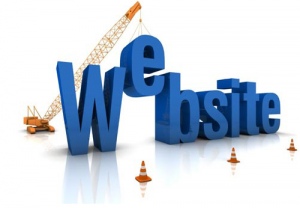High ROI (Return On Investment) is a dream of every online businesses owner. The primary task of every digital marketer is to boost conversion within the budget to get maximum return. The success of any campaign measured through ROI, because it shows a clear picture of any campaign overall performance and marketer can decide whether to continue, invest or pause his effort on it. Getting the desired investment on your returns are based on your website internal factors as well as external factors. Internal factors include website design, content, navigation & call to action, etc. same as external factors are campaign type, content, and targeted audience. ROI is calculated on simple formula: Net Profit / Total Investment x 100 = ROI.

Calculating ROI is useful in many areas, such as in monitor total cost incurred, highest and lowest performing channel, conversion flow and planning for future branding strategies. You can also segment your campaign based on ROI to control additional expenditure on your campaign.
In this article, we will cover how you can improve our ROI through optimization of different internal factors. Usually, internal factors focused on website layout, content, navigation, and call to action button. Once you implement the changes, track your site performance frequently. But it is recommended to monitor at least some days to get the exact outcome of your implemented changes. So let’s get started.
#1 Content
Many of us know this fact that there is a close relationship between content and search engine ranking. Your site content is the key to get relevant audience and conversion from direct and search engine ranking. That`s why SEO optimized content fits on the user as well as search engine perspective. To get higher ranking in Google maintain the quality of the content: Follow below Guidelines.
- Keep your content user oriented
- Use targeted keywords in the content
- Structure your post properly & maintain the flow
- Use image to justify your content
- Add Google Authorship Tag
- Avoid keyword stuffing
- Keep TEXT to HTML ratio more that 10%
- Maintain the keyword density (Should be lower than 5%)
- Add Call to action
Keep your content fresh and user-friendly. Google doesn’t give too much weightage to old content and written only for the search engine. Your content is your company and service Bio-Data, keep it straightforward and descriptive.
#2 Page Speed
A website page speed is a total time consumed by the site to load the complete page in a single session. Page Speed is important for both User and Search Engine, Why? Because user like those websites that provide information quickly (most cases within a second). A web page with a slow loading speed may cause poor landing page experience, which means user not only refuse to buy anything from your store and also never return to your site in future. Sometimes customer shares their poor shopping experience with their friend and family member that cause loss of those visitors too. Search Engines like Google consider page speed as one of their ranking factors, there is no official loading time has been defined by Google, but you can check your site speed rating from popular tools.
Below are some guidelines to improve website loading time.
- Minimize HTTP Request
- Try to streamline your elements
- Try to reduce the script
- Try CSS instead to image
- Check your website server response time
- Compress HTTP & HTTPS request
- Minify Resource file (Reduce unnecessary codes like extra space, line breaks etc)
- Optimize Image ( Resize Image & Use PNG format if possible)
#3 Header Tags
In the earlier days header tags are used to inform the user about important content in the pages. Google and other Search Engine also use header tags to analyze page relevancy based on highlighted title, sub-heading, content, and image from header tags. Your optimized title with accurately assign header tags may improve your search engine ranking and also helps you to structure your content correctly. A structured content has more conversion ratio than an unstructured content.
Here are some Header Tags writing Guidelines
- Keep one H1 tag on each page
- Use H2 in subheading
- Use bullets in content point
- Keep image URL descriptive & use ALT Tag
#4 Social Sharing
We all know, how much social media is important for every business. According to Rank Correlation Report, it is one of the key ranking factors in Google. Based on recent research, around 2.1 billion people are using social media, and 76% of people are using Facebook daily (2016 reports). Some researcher also stated Business who are highly active on social media has higher visit and conversion ratio. An online business like eCommerce can use social media in different ways like to promote brand & service, stay connected with the audience, update latest product launch, handle customer query & get customer feedback. Social media not indirectly responsible for sales but it is one of the factors of user buying process. Below tips may help to manage social media profile more efficiently.
- Create your business social media marketing plan before proceeding
- Monitor your Social media engagement
- Use LinkedIn to improve professional branding
- Choose Appropriate social media platform
- Use hashtags to improve your post visibility
- Schedule your post based on audience timing
#5 Trust
Nowadays earning trust from customers is important and necessary too. Assume you are running an eCommerce store and getting $500 – $1000 sales every day. Suddenly one day your website gets hacked, and an unknown hackers steal all your private data, what will happen next? You may lose your existing customers, hackers may misuse the data, and your website trust will start decreasing. The Customer mostly share their bad experience with their friend, family and even worst in their social media profile and soon your business will start getting negative reviews online, and as a result, you may lose your existing clients as well future customers. So how you can protect your business trust and use it as a tool to improve your conversion and ROI.
The best way is to use some common but powerful elements on your websites are social media icon, customer review, and most important SSL certificate. If you are new to this term “SSL Certificate,” it is a digital certificate that creates a secure channel to protects all the information transferred between user browser and your website server with 256-Bit encryption. Many CA authority offers SSL Certificate with different feature and price, but Comodo is best SSL Certificate in the industry. SSL products by Comodo offer latest encryption algorithm with the unlimited server license.
#6 Responsive Design
People can access your website from any device and anywhere, that is why responsive design is the best way to target multiple devices from a single site. Responsive design is a layout of a website build with the help of HTML and CSS coding to provide optimal viewing experience such as properly readable content, clear navigation, simple scrolling and pinning features in any device from desktop to mobile. Responsive design also an essential factor for higher ROI, because the user can access your website from their desktop, laptop, mobile, tablet.
Below are some primary benefits of Responsive Design
- Responsive design is flexible and easily fit into any devices.
- Responsive design is cost effective because you don’t need to make a different website for different device.
- Responsive design provides better User-Experience because the user gets same feature on any device.
- Google recommends responsive design
Keep updated with the market, monitor competitors and continue to evaluate your strategy. Many tools helps you to calculate ROI better like Google Analytics and paid other tools.







